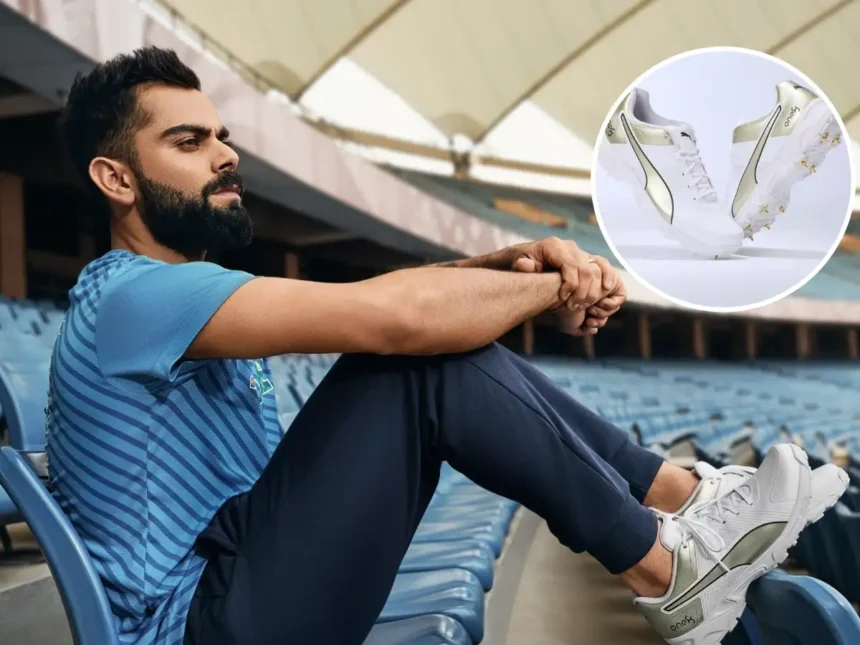Introduction: The Science Behind Spiked Footwear
In high-performance sports, every step counts. Whether it’s sprinting, fielding, batting, or jumping, traction and stability are essential for peak athletic performance. That’s why many sportsmen wear shoes with spikes. These specially designed shoes help athletes gain a competitive edge by improving grip, speed, and balance on various surfaces. But what exactly do spikes do, and why are they so widely used in sports?
What Are Spike Shoes?
Spike shoes are athletic footwear that feature metal, plastic, or rubber protrusions—called spikes—on the sole. These are typically screwed into the bottom of the shoe or built directly into the outsole, depending on the sport and manufacturer.
Spikes vary in length, shape, and material, and their configuration can be customized for different terrains such as grass, synthetic tracks, mud, or turf.
Why Sportsmen Use Shoes with Spikes?
1. Improved Grip and Traction
The primary reason athletes use spiked shoes is for enhanced traction. Spikes dig into the surface—be it track, turf, or grass—preventing slipping and providing better control during high-speed movements. This is particularly critical in sports like:
- Track and field athletics
- Football (soccer)
- Cricket
- Baseball
- Rugby
Athletes running or changing direction quickly benefit from the extra stability spikes provide.
2. Increased Speed and Acceleration
Spikes minimize energy loss due to slippage. For sprinters, the better the grip, the more force can be applied through the ground, resulting in quicker starts and faster acceleration. In sprinting shoes, spikes are often concentrated in the forefoot area to promote explosive push-offs.
Read Also: World’s Biggest Cricket Stadium: Narendra Modi Stadium, Ahmedabad
3. Better Stability in Wet or Uneven Conditions
On wet fields or muddy grounds, regular shoes can become hazardous due to reduced friction. Spikes offer added grip in such situations, helping sportsmen maintain balance and reduce the risk of injury. In cricket and football, for example, spiked shoes are crucial during monsoon or dew-heavy matches.
4. Sharp Turns and Agility
Sports like hockey, baseball, and rugby require athletes to make sharp turns, sudden stops, or changes in direction. Spikes help prevent sliding while making these maneuvers, providing better foot anchorage and smoother transitions.
Sports Where Spiked Shoes Are Commonly Used
| Sport | Use of Spikes | Purpose |
|---|---|---|
| Track & Field (Sprinting, Long Jump) | Forefoot spikes | Acceleration, take-off grip |
| Cricket | Full-length or half spikes | Grip while bowling, running, and fielding |
| Football (Soccer) | Cleats with molded studs or metal spikes | Grip on turf and grass fields |
| Baseball | Metal/plastic cleats | Stability during running and pitching |
| Rugby | High studs/spikes | Secure footing in scrums and tackles |
| Golf | Soft spikes | Balance and grip during swing |
Types of Spikes Used in Sports Shoes
- Pyramid Spikes – Traditional sharp-ended spikes used for grass and hard dirt
- Needle Spikes – Narrower, ideal for synthetic tracks (often used in sprinting)
- Tartan Spikes – Blunt tips for all-weather tracks
- Christmas Tree Spikes – Tapered, tiered design for grip and minimal surface damage
- Replaceable Studs – Used in cricket and football, can be adjusted based on field condition
Are There Any Downsides to Wearing Spikes?
While spike shoes offer performance benefits, they must be used appropriately:
- Not ideal for casual wear or hard concrete — wearing spikes on improper surfaces can damage both the spikes and the ground.
- Increased pressure on the foot — especially in sprint shoes, where cushioning is minimal.
- Surface-specific — using the wrong type of spike for the field or track can lead to poor performance or even injury.
Athletes are advised to train under supervision and wear spike shoes only for competitive or practice conditions that warrant them.
Conclusion: Why Sportsmen Use Shoes with Spikes
Shoes with spikes are not just a part of an athlete’s gear—they’re a performance tool. Whether it’s gaining milliseconds on a race track, executing a perfect yorker on a grassy pitch, or making a tackle on a wet football field, spike shoes enhance grip, improve stability, and help prevent slips and injuries. Choosing the right type of spikes based on the sport and surface is essential for safety and effectiveness.
As sports evolve and surfaces become faster, the design and utility of spike shoes continue to be refined—making them an integral part of modern athletic performance.
FAQs: Why Sportsmen Use Shoes with Spikes
Q1: Why are spikes important in sprinting?
Spikes provide grip during push-off, reducing slippage and maximizing forward motion for better speed and acceleration.
Q2: Are spikes allowed in cricket?
Yes, cricketers, especially bowlers, use spike shoes to maintain balance on turf pitches and avoid slipping during delivery.
Q3: Can I wear spike shoes on concrete or indoors?
No, spike shoes should not be used on hard or indoor surfaces as they can cause injury and damage both the shoe and the floor.
Q4: Are there different spikes for different sports?
Yes, spike size, shape, and placement vary across sports like athletics, cricket, and football based on the movement pattern and surface type.












